BEARS RETURNED TO THE WILD
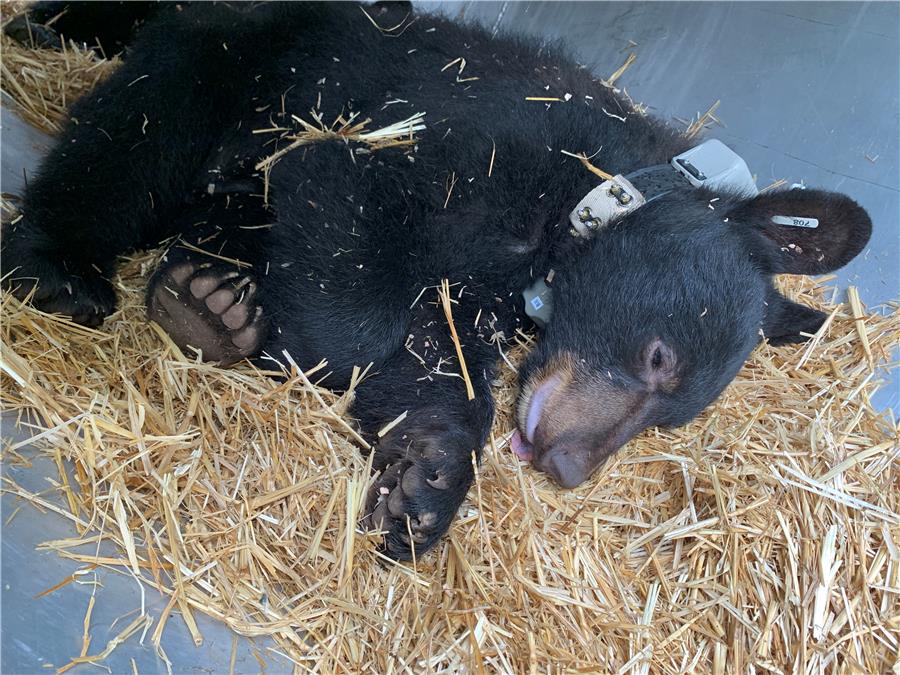
These radio collars will eventually fall off as the bears grow. The fabric spacer will rot and the collar will drop away, but first, research data can be acquired.
The bears that have been in our care all winter were released earlier this month. We worked with biologists from the Washington Department of Fish and Wildlife (WDFW) to safely return these two bears back to the wild. The process started early in the day and the bears were tranquilized so that they could be weighed, measured, examined, and fitted with radio collars. They were then transported to the release location.
Both bears were healthy, and their weight was appropriate for their age. WDFW biologists took a full set of measurements, tagged each bear with a number, tattoo them, and then fitted them with a radio tracking collar. Each day these GPS collars will provide the department with location information. Next winter, once the bears are hibernating, they will take another set of measurements. One of the bears was female, so it will be interesting to follow her should she have cubs.
You can watch our video showing the release here on our You Tube channel. An important part of the bear release is the use of Karelian Bear dogs to push the bears away from people and deter them from frequenting communities where they can become a nuisance. We want to thank WDFW, our colleagues at PAWS Wildlife, and our veterinarian Dr. Lesley Kovar for their support and assistance making it possible for these bears to get a second chance at life in the wild.
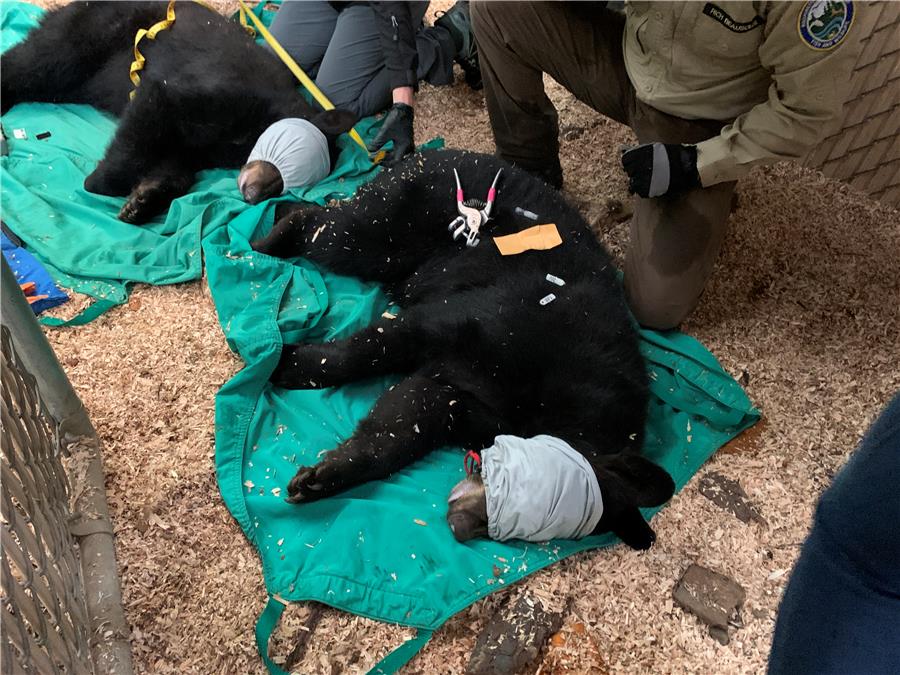
Everyone worked quickly to capture all the necessary data and safely transfer the bears from their enclosure to the bear release transport cage.
Babies Keeping Us BUSY...
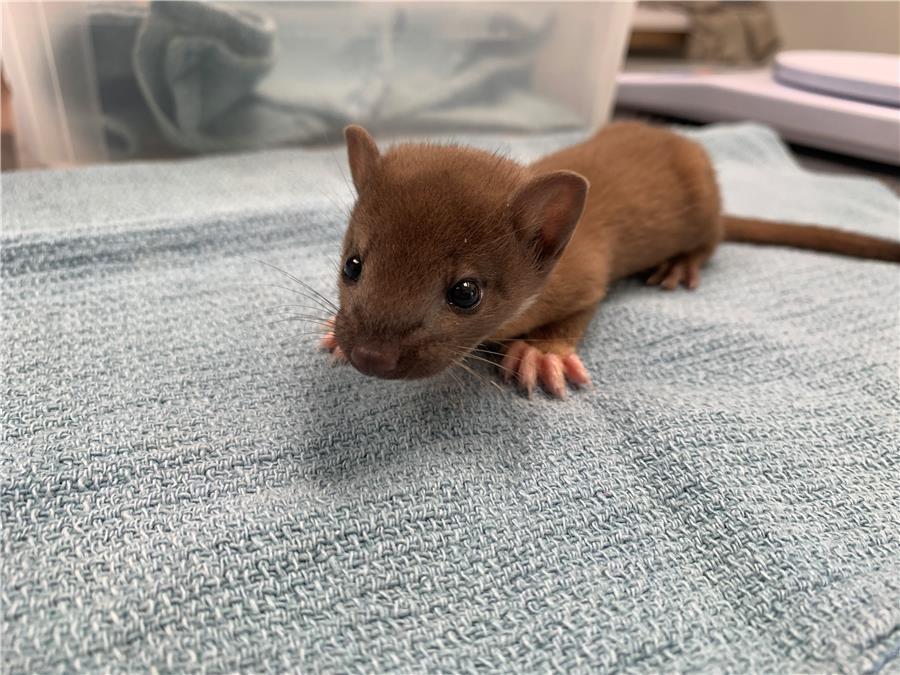
An orphaned Long-tailed weasel.... in the winter they shed their summer coat and are white.
Baby season is in full swing, our baby bird and baby mammal nurseries keep our staff and interns busy for 12 hours a day. We had to make adjustments to our operations due to the pandemic, but we never stopped accepting wildlife patients. Over 800 wildlife patients have arrived in the past two months, somedays we received over 40 animals in a day. Cottontails, opossums, goslings, fawns, ducklings, squirrels, chipmunks, weasels, river otters, songbirds, owlets, raccoons, and coyotes all require different formula, food, and care.
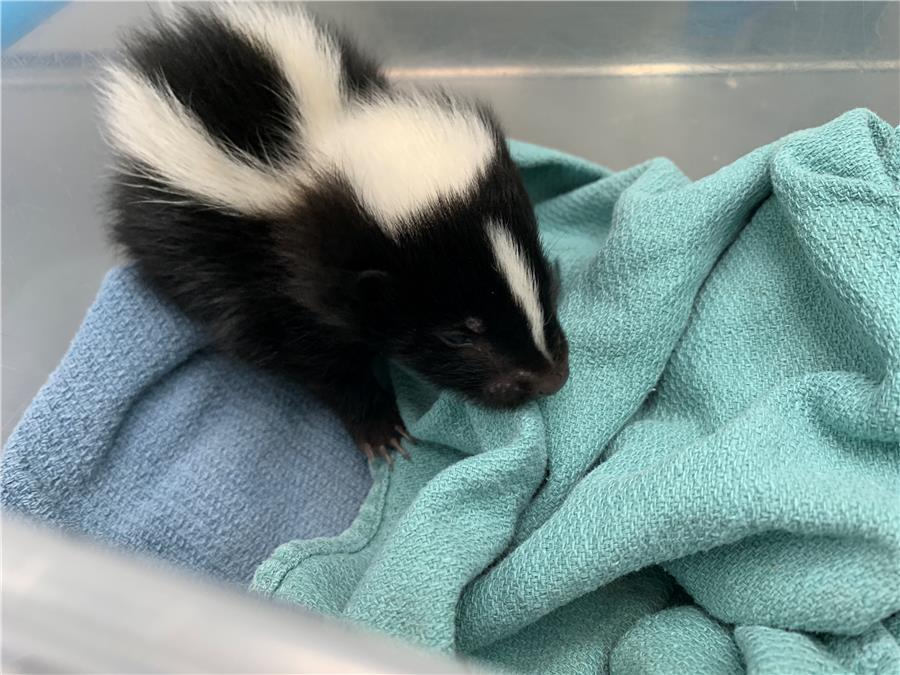
Stinking Cute! An orphaned Striped Skunk brought to us from Eastern Washington.
Next week we will begin to bring back some volunteers. We still need to limit our capacity of people on site, but we are taking all necessary precautions and are glad to have some extra help again. Our volunteers are an important part of organization and we are so happy to have them return.
Check out more photos and stories on our social media pages and website. Links at the top of our website home page will take you to our Instagram, FaceBook, and YouTube pages.
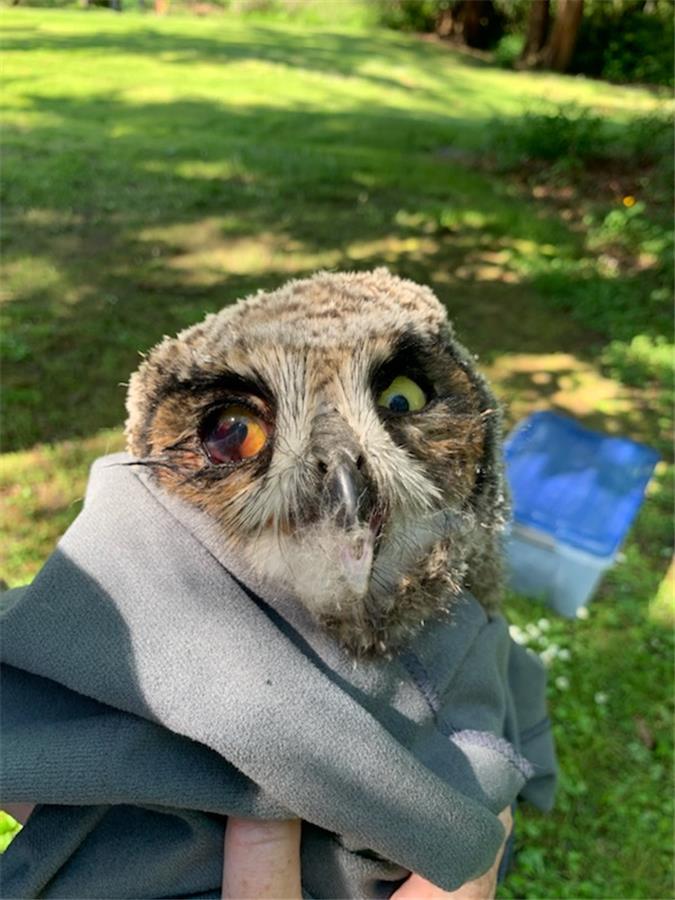
Thank you to our volunteer Cara for rescuing this fledgling Great Horned owlet. Sadly, even though his parents were there, you can see he suffered a serious injury to one eye when he came out of the nest. His fall into a pile of blackberry brambles caused several injuries. We have about a dozen owls in our care right now and they eat LOTS of mice each day. It costs about $400/week to feed our orphaned owlets.
You can help make 2020 Baby Season a success by donating or shopping from our Amazon Wishlist to help keep us stocked with important items and supplies we use every day. Thank you to all of you that support us already, we appreciate your role in our mission. Wildlife rehabilitation is a community effort and you are all part of our team!
THANK YOU!!
About the Karelian Bear Dog Program: In 2003, Washington Department of Fish and Wildlife biologist Rocky Spencer partnered with a young, black-and-white dog with an ambitious mission in mind: To reduce conflicts between bears and humans in Washington state.
Over a decade later, more of these rare and remarkable dogs have joined the WDFW, helping investigate poaching cases, providing a deterrent to bears growing a little too comfortable with civilization, and even assisting police in a homicide investigation.
The Karelian bear dog has been bred and used for centuries by hunters and farmers in Finland and Russia, but today they fill a unique role with the department. Among their many jobs:
- Responding to complaints of problem bears and mountain lions throughout Washington.
- Assisting in “hard releases,” a non-lethal process designed to restore a bear’s natural fear of humans.
- Detecting and locating poached wildlife and other evidence.
- Visiting schools and public events around the state to help share WDFW’s mission.
Though Mishka, WDFW’s original Karelian bear dog, retired in 2015, his legacy lives on in the other bear dogs that now provide invaluable services for the department. (This information was sourced from WDFW’s website explaining the program.)